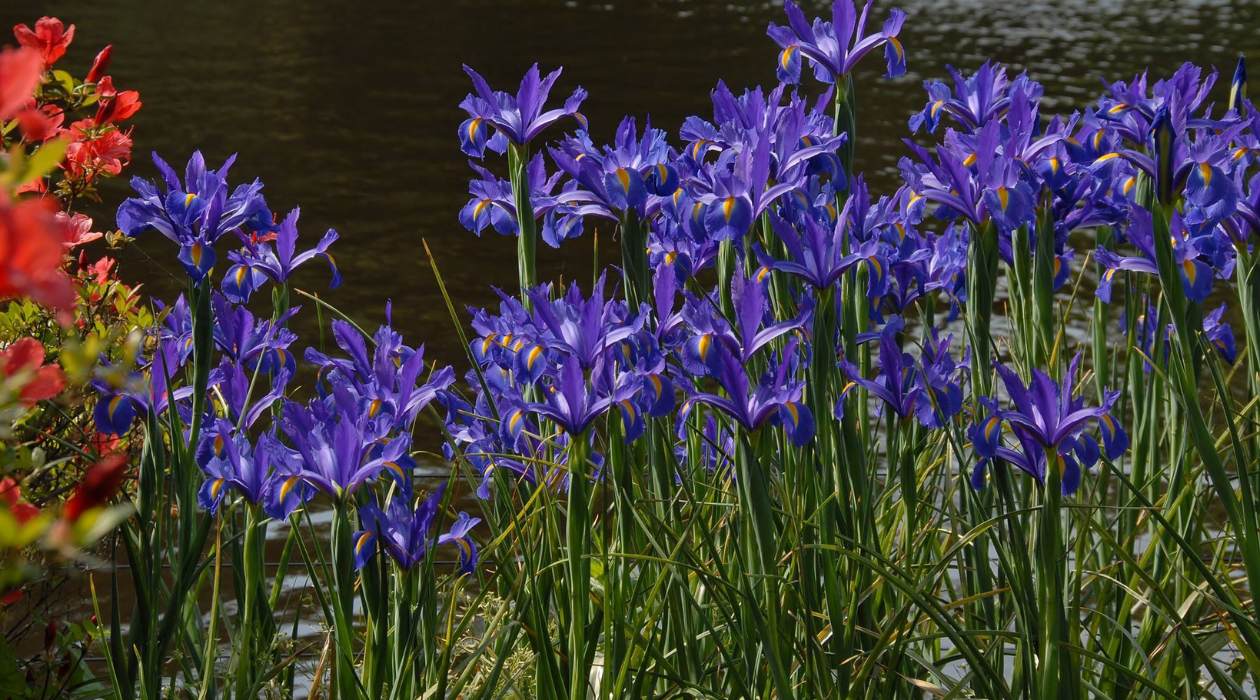

Articles
How To Store Iris Bulbs
Modified: February 26, 2024
Learn the best techniques for storing iris bulbs with our informative articles. Ensure your bulbs stay healthy and vibrant for the next blooming season.
(Many of the links in this article redirect to a specific reviewed product. Your purchase of these products through affiliate links helps to generate commission for Storables.com, at no extra cost. Learn more)
Introduction
Storing iris bulbs properly is essential for their long-term survival and successful growth in the following seasons. Whether you have a collection of prized iris varieties or want to preserve the bulbs during the offseason, understanding the right storage techniques is crucial. This article will guide you through the process of storing iris bulbs effectively, ensuring their health and vitality when it’s time to replant.
Iris bulbs are known for their vibrant and showy blooms, making them a popular choice among garden enthusiasts. These beautiful flowers come in a wide variety of colors and patterns, adding visual interest to any garden. However, to maintain the health and vigor of these plants, it is important to properly store their bulbs during the dormant period.
When you store your iris bulbs correctly, you give them the best chance of surviving the winter months and thriving when the next growing season arrives. This process involves preparing the bulbs for storage, selecting the right storage location, and monitoring their condition to ensure they remain healthy during their dormant period. By following the proper storage techniques, you can enjoy a flourishing irises garden year after year.
Key Takeaways:
- Properly storing iris bulbs is crucial for their long-term health and successful growth. Timing, preparation, and monitoring are key to ensuring the bulbs remain healthy and ready for replanting.
- Choosing the right storage location, whether in containers or in the ground, and providing proper ventilation and maintenance are essential for successful iris bulb storage. Attention to detail and patience will lead to vibrant and flourishing iris blooms in the future.
Read more: How To Store Iris Rhizomes
Why Store Iris Bulbs?
Storing iris bulbs is essential for a number of reasons. Whether you’re faced with cold winters, limited space, or simply want to preserve the bulbs for future use, proper storage techniques are crucial. Here are a few reasons why storing iris bulbs is important:
1. Protection from Extreme Weather: Iris bulbs are susceptible to damage from extreme cold or heat. Storing them during the dormant period helps shield them from these harsh weather conditions, increasing their chances of survival.
2. Preservation of Bulbs: Storing iris bulbs allows gardeners to save and preserve their favorite varieties. Whether you have heirloom bulbs or rare cultivars, proper storage techniques ensure their longevity, allowing you to enjoy these treasured plants for years to come.
3. Space Management: Iris plants can quickly multiply, leading to overcrowding in flower beds or garden spaces. By storing excess bulbs, you can free up space for other plants and maintain a more balanced and organized garden layout.
4. Control Timing of Planting: Storing iris bulbs also allows you to control the timing of their planting. You can store bulbs until the desired planting season, ensuring optimal conditions for successful growth.
5. Easier Transportation: Storing iris bulbs makes transportation easier, especially if you need to move or relocate your garden. Bulbs can be conveniently packed and transported to your new location, preserving the integrity of your beloved plants.
6. Prevention of Disease: Storing iris bulbs properly helps prevent the spread of diseases and pests. By removing the bulbs from the garden and keeping them in a controlled environment, you reduce the risk of infections and infestations that could harm your entire iris collection.
Overall, storing iris bulbs is not only practical but also beneficial for the health and longevity of your plants. By following the proper storage techniques and taking the time to preserve your bulbs, you can ensure the continued beauty and success of your iris garden.
When to Store Iris Bulbs
Knowing when to store iris bulbs is crucial for their long-term health and successful growth. The ideal time to store iris bulbs depends on your specific climate and the growth cycle of the iris plants. Here are some general guidelines to help you determine when to store your iris bulbs:
1. Fall Season: In most regions, the fall season is the optimal time to store iris bulbs. Once the foliage of the iris plants turns yellow or brown and begins to die back, it’s a clear indication that the bulbs are entering their dormant phase and should be prepared for storage.
2. After Blooming: Once the irises have finished blooming, it’s a good time to start thinking about storing the bulbs. Typically, this occurs during late spring or early summer, although timing can vary depending on the iris variety and your specific location.
3. Avoid Frost: It’s important to store iris bulbs before the first frost arrives. Freezing temperatures can damage the bulbs, affecting their viability for future growth. Keep an eye on the weather forecast and plan accordingly.
4. Timeframe: The duration for which you store iris bulbs can vary. Some gardeners choose to store them for a few weeks or months, while others store them for the entire winter season. The choice depends on factors such as your climate, available storage space, and personal preference.
It’s important to note that iris bulbs require a dormant period for rejuvenation and to store energy for future growth. Storing the bulbs at the appropriate time allows them to rest and ensures they will be ready to flourish when the next growing season arrives.
Remember to remove any dead or decaying foliage from the iris plants before storing the bulbs. This helps eliminate potential sources of disease and ensures the bulbs are clean and healthy for storage.
By understanding the specific timing and cues for storing iris bulbs, you can maximize their chances of survival and promote their continued vitality year after year.
Preparing the Bulbs for Storage
Properly preparing iris bulbs for storage is essential to ensure their health and viability during their dormant period. By taking a few simple steps, you can help protect the bulbs from disease, pests, and other potential issues. Here’s how to prepare your iris bulbs for storage:
1. Cleaning: Start by gently removing any excess soil or debris from the bulbs. Use a soft brush or your hands to carefully brush off the dirt, being careful not to damage the bulbs or remove any loose outer layers. Cleaning the bulbs helps prevent the spread of disease and makes them easier to store.
2. Drying: After cleaning, allow the bulbs to dry thoroughly. Place them in a well-ventilated area, away from direct sunlight, for a few days. This helps prevent moisture buildup and reduces the risk of rot during storage.
3. Trimming: Inspect the bulbs for any damaged or diseased parts. Remove any soft or discolored areas using a clean, sharp knife. Be sure to sanitize the knife between cuts to prevent the spread of infection. Trimming the bulbs promotes healthy storage and reduces the risk of disease transmission.
4. Curing: Some gardeners recommend curing the bulbs before storage to toughen the outer layers. This can be done by placing the bulbs in a cool, dry location for a few weeks. However, keep in mind that not all iris bulbs require curing, so check the specific recommendations for the variety you are storing.
5. Labeling: As you prepare the bulbs, it’s a good idea to label them with the iris variety and color. This will help you identify them when it’s time to replant. Use a waterproof marker or labels that won’t fade or wash off easily.
By following these steps, you can ensure that your iris bulbs are clean, dry, and in good condition for storage. Properly preparing the bulbs minimizes the risk of disease, maintains their quality, and sets the stage for successful storage and future growth.
Choosing the Right Storage Location
Choosing the right storage location is crucial to maintain the health and viability of your iris bulbs during their dormant period. The ideal storage location should provide the right temperature, humidity, and darkness to ensure the bulbs remain in optimal condition. Here are a few factors to consider when selecting a storage location for your iris bulbs:
1. Cool Temperatures: Iris bulbs thrive when stored in cool temperatures ranging from 35°F to 50°F (1.5°C to 10°C). Avoid storing the bulbs in areas that experience extreme heat or fluctuating temperatures, as this can affect their viability. Basements, garages, or unheated rooms are often suitable choices for storing iris bulbs.
2. Darkness: Iris bulbs prefer darkness during their dormant phase. Exposure to light can trigger premature growth or sprouting, which is undesirable during storage. Choose a storage location that is dark or provides enough shade to prevent exposure to sunlight or artificial light sources.
3. Dry Environment: Moisture can lead to rot or fungal growth, so it’s important to select a storage location that is dry. Avoid storing the bulbs in damp or humid areas, as this can promote the development of mold or mildew. Ensure good ventilation and avoid areas prone to excessive moisture.
4. Air Circulation: While a dry environment is important, it’s also crucial to provide adequate air circulation in the storage area. This helps prevent the buildup of stagnant air and reduces the risk of mold or disease development. Consider placing the bulbs in breathable containers or mesh bags that allow air to circulate around them.
5. Pest Prevention: Choose a storage location that is free from pests, such as rodents or insects. These critters can damage or consume the bulbs during storage. Make sure the storage area is secure and take precautions to prevent infestations.
Consider these factors when selecting a storage location for your iris bulbs. A cool, dark, and well-ventilated area will help maintain the bulbs’ dormant state and preserve their quality until it’s time to replant them.
Store iris bulbs in a cool, dry place with good air circulation. Avoid storing them in airtight containers, as they need some airflow to prevent mold and rot. Label the bulbs with their variety and color for easy identification in the spring.
Read more: How To Store Bearded Iris Rhizomes
Storing Iris Bulbs in Containers
Storing iris bulbs in containers is a popular method that offers convenience and easy access when it’s time to replant. Proper container storage helps protect the bulbs from damage and provides a controlled environment for their dormant period. Here’s how to store iris bulbs in containers:
1. Selecting Containers: Choose containers that are clean, dry, and have good drainage. Plastic or wooden crates, mesh bags, or cardboard boxes with air holes are suitable options. Avoid using airtight containers, as they can trap moisture and lead to rot.
2. Preparing the Containers: Ensure that the chosen containers are clean and free from any debris or traces of soil. This helps maintain a sterile environment for the bulbs and reduces the risk of disease or pests.
3. Layering Bulbs: Place a layer of loose, well-draining potting mix or vermiculite at the bottom of the container. Gently arrange the bulbs on top of the layer, making sure they don’t touch each other. Space them out to allow air circulation and prevent the spread of disease. Add more potting mix or vermiculite to cover the bulbs, leaving the tops slightly exposed.
4. Labeling: Label each container with the iris variety, color, and any other relevant information. This helps you identify and organize the bulbs when it’s time to replant. Use waterproof markers or labels that won’t fade or wash off easily.
5. Storage Location: Place the containers in a cool, dark area with good air circulation. A basement, garage, or unheated room are suitable choices. Ensure the area maintains a consistent temperature range of 35°F to 50°F (1.5°C to 10°C) and has low humidity.
6. Monitoring: Regularly check the stored bulbs for any signs of disease, rot, or sprouting. Remove any bulbs that show signs of damage or disease to prevent the spread to other bulbs.
Storing iris bulbs in containers offers convenience when it comes time to replant. The containers provide protection, organization, and a controlled environment for the bulbs’ dormant period, increasing their chances of healthy growth in the future. Remember to keep the storage area clean, dry, and well-ventilated to ensure the bulbs remain in optimal condition.
Storing Iris Bulbs in the Ground
Storing iris bulbs in the ground is an alternative method for those who prefer to keep their bulbs directly in the soil during the dormant period. This method can be suitable for regions with mild climates or areas where the ground rarely freezes. Here’s how to store iris bulbs in the ground:
1. Selecting a Location: Choose a spot in your garden where the soil is well-draining and relatively dry. Avoid areas prone to waterlogging or excessive moisture, as this can cause the bulbs to rot. Ensure the location receives adequate sunlight and has enough space to accommodate the bulbs you want to store.
2. Preparing the Bulbs: Clean and trim the bulbs as you would for any other storage method. Remove debris and dead foliage, and trim any damaged or diseased areas. This helps minimize the risk of disease transmission and ensures the bulbs are in good condition for storage.
3. Planting the Bulbs: Dig a trench or individual holes in the selected location. The depth of the holes or trench should be slightly deeper than the length of the bulbs. Space the bulbs out, leaving some distance between each bulb to allow for proper growth and air circulation.
4. Covering the Bulbs: Gently cover the bulbs with soil, ensuring they are completely buried. Press the soil down lightly to eliminate air pockets and provide stability for the bulbs. Avoid over-packing the soil, as this can hinder bulb growth and lead to poor drainage.
5. Labeling: It’s a good idea to label the area where you have planted the bulb so that you can easily locate and identify them later. Use garden stakes, markers, or any other labeling method that works best for you.
6. Maintenance: While the bulbs are in the ground, monitor them periodically for signs of pests, disease, or rot. Remove any weeds or debris that may accumulate near the bulbs, as they can interfere with growth.
Storing iris bulbs in the ground can be a convenient option for gardeners in suitable climates. The bulbs are protected by the surrounding soil, minimizing the risk of damage or deterioration. However, it’s important to choose an appropriate location, prepare the bulbs properly, and monitor their condition throughout the dormant period to ensure their successful storage and future growth.
Monitoring and Maintaining Stored Bulbs
Proper monitoring and maintenance are essential for ensuring the health and viability of stored iris bulbs. By regularly checking on the bulbs and taking necessary precautions, you can prevent issues such as rot, mold, and pest infestations. Here are some tips for monitoring and maintaining stored bulbs:
1. Regular Inspection: Periodically inspect the stored bulbs to check for any signs of damage, disease, or sprouting. Remove any bulbs that show signs of rot or decay to prevent the spread to other bulbs.
2. Air Circulation: Ensure that there is adequate air circulation in the storage area. Good ventilation helps prevent the buildup of stagnant air and reduces the risk of mold or fungal growth. If necessary, adjust the positioning of the containers or bags to allow for better airflow.
3. Temperature Control: Maintain a consistent temperature range of 35°F to 50°F (1.5°C to 10°C) in the storage area. Extreme temperature fluctuations can be detrimental to the bulbs. Use a thermometer to regularly monitor the temperature and make adjustments if needed.
4. Dry Environment: Keep the storage area dry to prevent moisture-related issues. Ensure that there are no water leaks or excessive humidity levels. If necessary, use a dehumidifier or moisture-absorbing materials to maintain an optimal dry environment.
5. Pest Prevention: Regularly check for any signs of pests, such as rodents or insects, in the storage area. Implement appropriate pest control measures to prevent infestations that can damage the bulbs. This may include using traps, natural repellents, or consulting with a professional if needed.
6. Separate Varieties: If storing multiple varieties of iris bulbs, it’s a good idea to keep them separated. This helps prevent cross-contamination and ensures that each variety stays true to its unique characteristics.
7. Repositioning: Occasionally reposition the containers or bags containing the stored bulbs to help prevent pressure points and ensure even airflow. This helps maintain the integrity of the bulbs.
Regular monitoring and proper maintenance are essential in preserving the health and viability of stored iris bulbs. By following these tips, you can increase the chances of successful storage and ensure that your bulbs remain healthy and ready for replanting when the time comes.
Tips for Successful Iris Bulb Storage
To ensure successful storage of iris bulbs and maximize their chances of thriving in future seasons, here are some essential tips to follow:
1. Choose Healthy Bulbs: Start with high-quality, disease-free bulbs for storage. Avoid storing bulbs that show signs of damage, rot, or disease. Healthy bulbs have a better chance of surviving storage and producing robust blooms.
2. Proper Cleaning and Drying: Clean the bulbs by removing any excess soil or debris, and allow them to dry thoroughly before storing. This reduces the risk of rot and helps maintain bulb health during storage.
3. Label and Organize: Properly label each variety of iris bulb before storage. This will help you identify them easily when you’re ready to replant. Additionally, organize and group bulbs according to their specific characteristics for a more systematic approach to replanting.
4. Store in a Cool, Dark, and Dry Location: Choose a storage location that provides cool temperatures, darkness, and low humidity. Basements, garages, or unheated rooms are suitable areas for storing iris bulbs. Maintain a consistent temperature range of 35°F to 50°F (1.5°C to 10°C) to ensure dormancy.
5. Provide Proper Ventilation: Ensure good air circulation in the storage area by using breathable containers or mesh bags. This helps prevent the buildup of stagnant air and reduces the risk of mold or disease development.
6. Regularly Monitor and Inspect: Check the stored bulbs periodically for any signs of rot, disease, or sprouting. Remove any damaged or decaying bulbs promptly to prevent the spread of issues to other bulbs.
7. Avoid Moisture: Keep the storage area dry and free from excess moisture. Moisture can lead to rot or fungal growth. Use moisture-absorbing materials or a dehumidifier if necessary to maintain a dry environment.
8. Protect from Pests: Take measures to prevent pests from damaging the stored bulbs. Regularly check for signs of pests and implement appropriate pest control methods, if needed.
9. Consider Refrigeration: If you live in an area with warm climates, you may consider refrigerating the bulbs for additional cooling during storage. Place the bulbs in breathable bags or containers and store them in the refrigerator (not the freezer) at temperatures around 35°F (2°C).
10. Replant at the Right Time: When it’s time to replant the stored bulbs, ensure you choose the appropriate planting time for your specific region and the desired bloom season of the iris variety.
By following these tips, you can increase the success rate of storing iris bulbs and enjoy a flourishing iris garden in the upcoming seasons. Proper preparation, storage conditions, and monitoring are crucial for the long-term health and vitality of the bulbs.
Read more: How To Store Bulbs
Conclusion
Storing iris bulbs properly is essential for their long-term health and successful growth. By following the right storage techniques, you can ensure the bulbs remain in optimal condition during their dormant period and thrive when it’s time to replant. Whether you choose to store the bulbs in containers or in the ground, there are important factors to consider.
Timing is crucial when it comes to storing iris bulbs. Pay attention to the natural growth and dormancy cycles of the iris plants and choose the appropriate time to store the bulbs. Cleaning, drying, trimming, and labeling the bulbs before storage helps maintain their health and organization.
The selection of a suitable storage location is critical. Whether it’s a cool, dark, and dry area for containers or a well-draining spot in the garden for in-ground storage, the conditions should be conducive to maintaining the bulbs’ dormancy and preventing issues such as rot, disease, and pest infestations.
Regular monitoring and proper maintenance are key to successful bulb storage. Inspect the bulbs periodically, ensure adequate air circulation, control temperature and humidity levels, and take preventive measures against pests. By implementing these precautions, you can minimize the risk of damage and promote the longevity and health of the bulbs.
Remember, successful iris bulb storage requires attention to detail and patience. With careful preparation, proper storage techniques, and regular monitoring, you can enjoy the beauty of iris blooms year after year. So, make the most of the dormant period and ensure your iris bulbs are ready for a vibrant and flourishing garden in the seasons to come.
Frequently Asked Questions about How To Store Iris Bulbs
Was this page helpful?
At Storables.com, we guarantee accurate and reliable information. Our content, validated by Expert Board Contributors, is crafted following stringent Editorial Policies. We're committed to providing you with well-researched, expert-backed insights for all your informational needs.
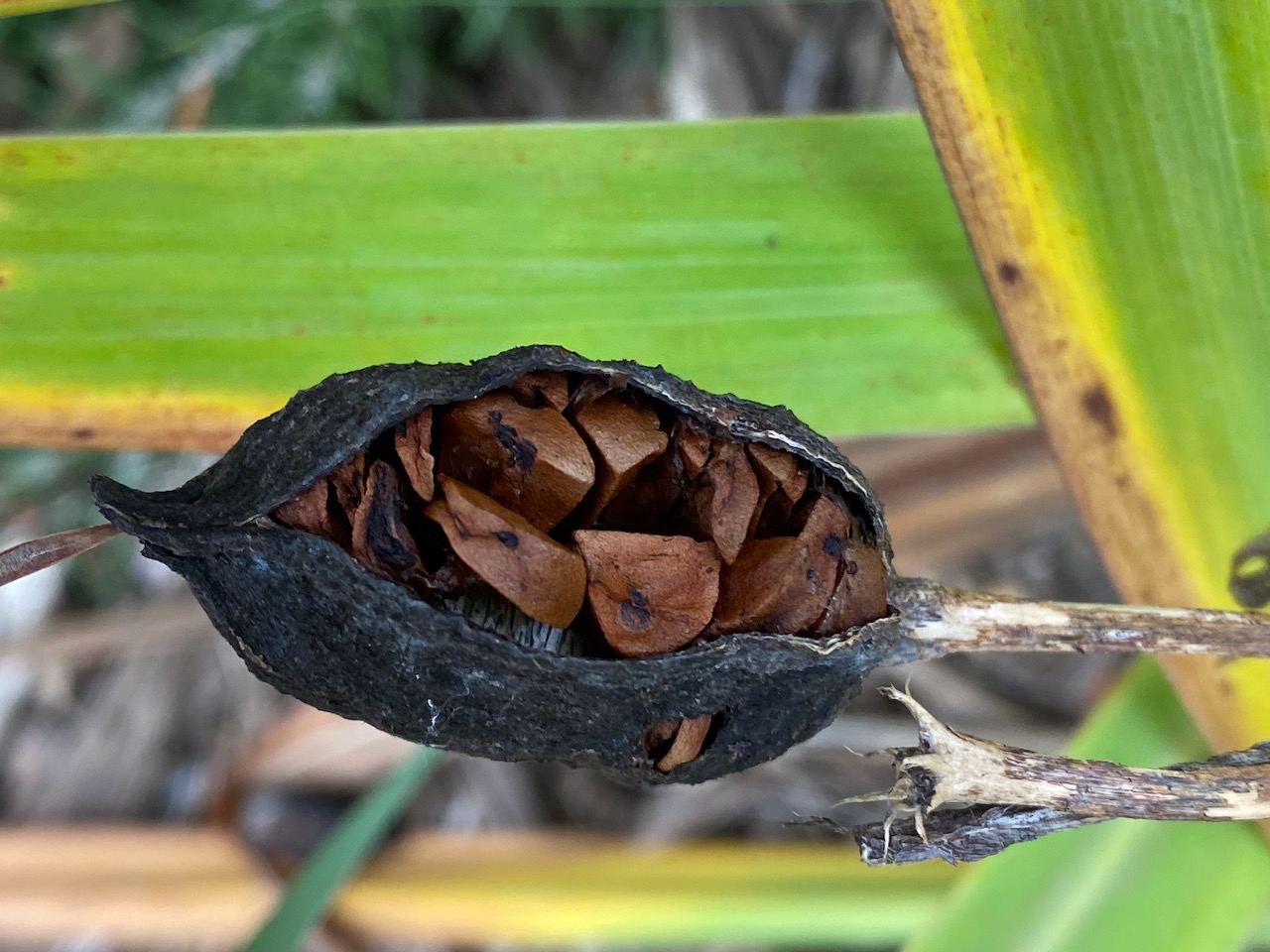
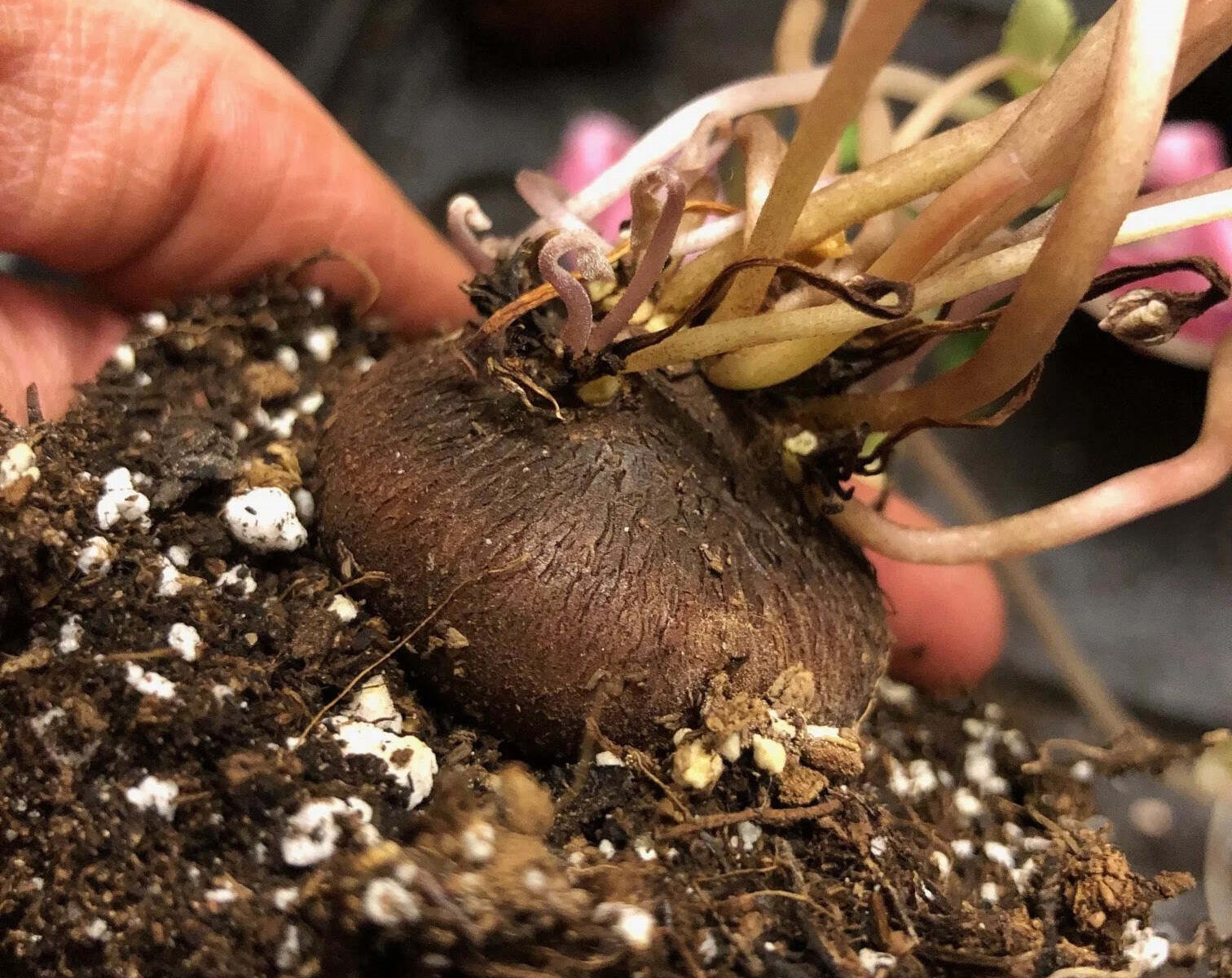


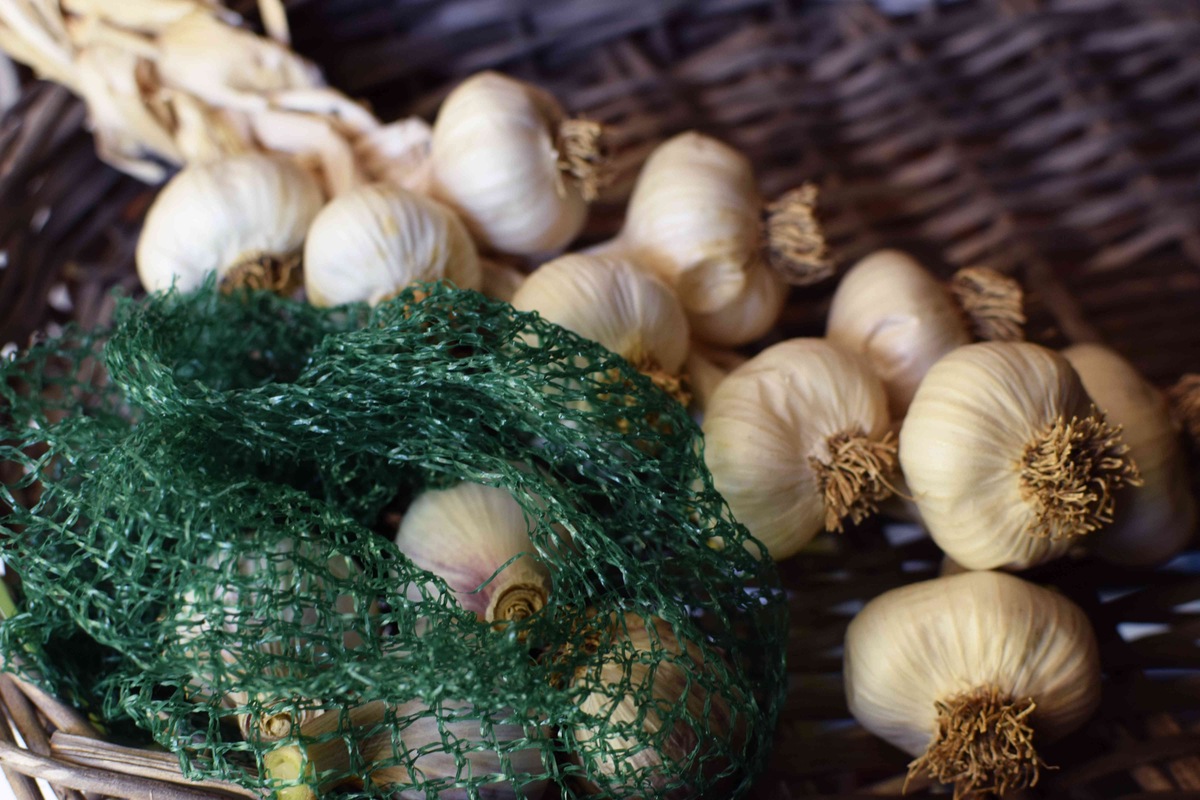
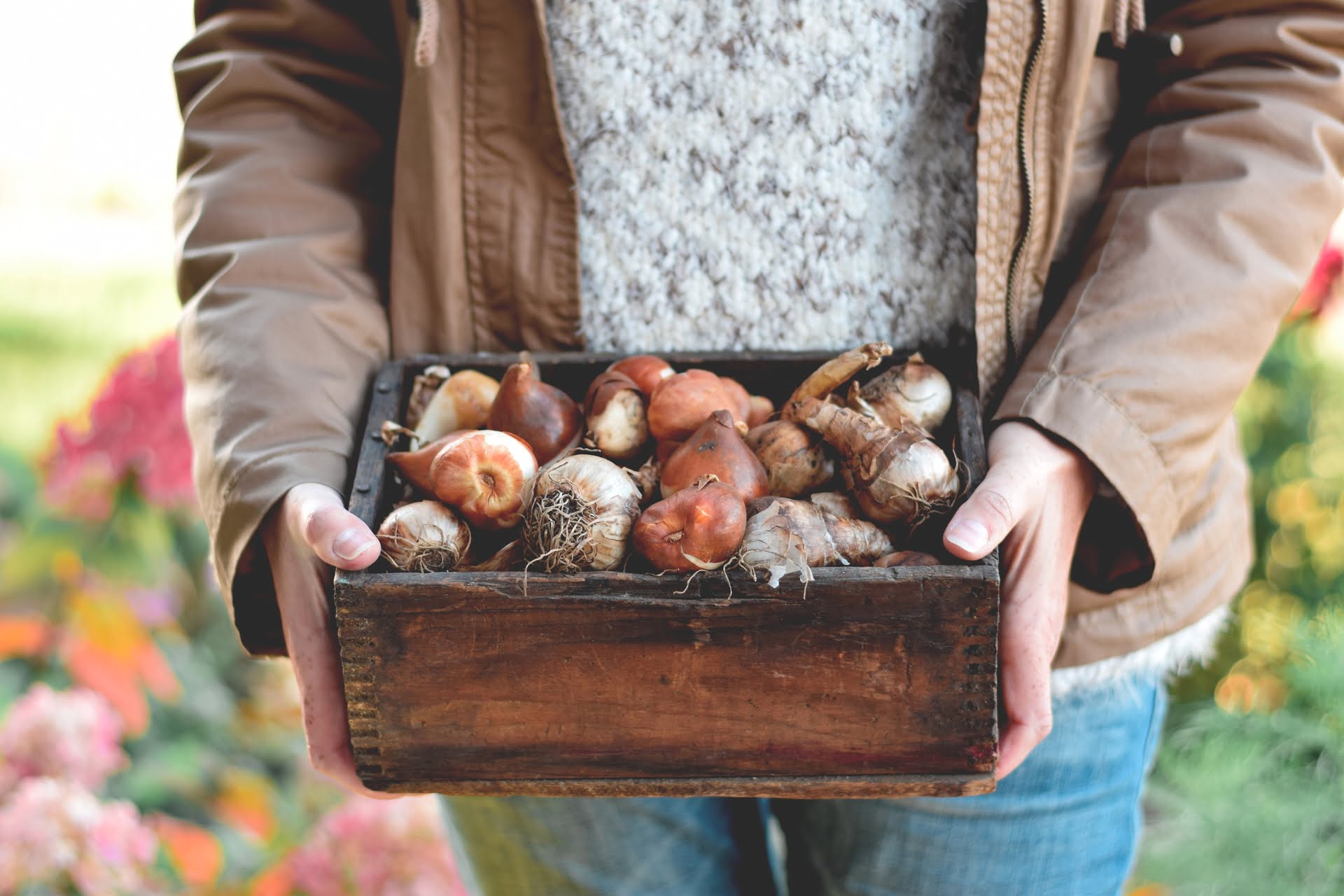
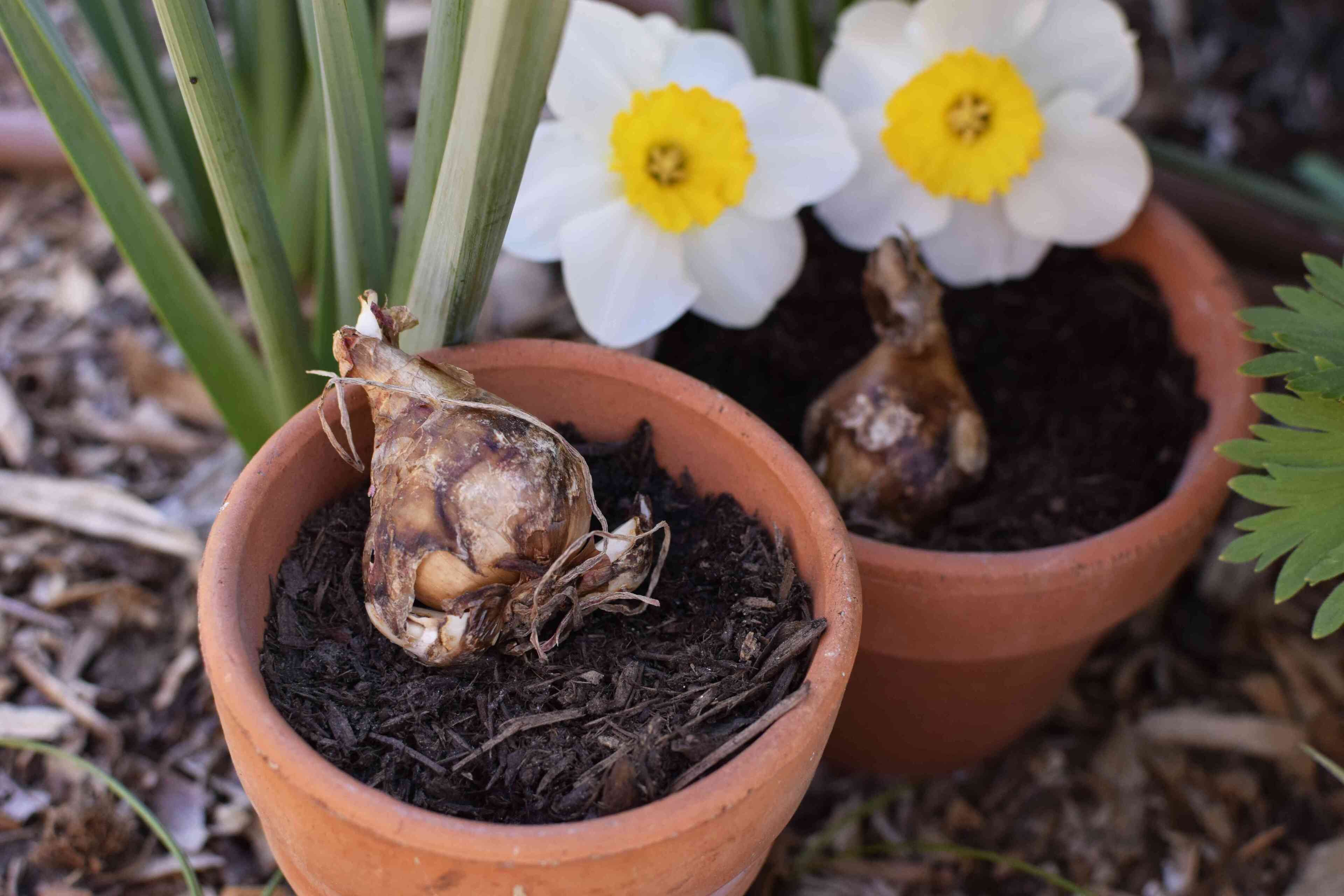
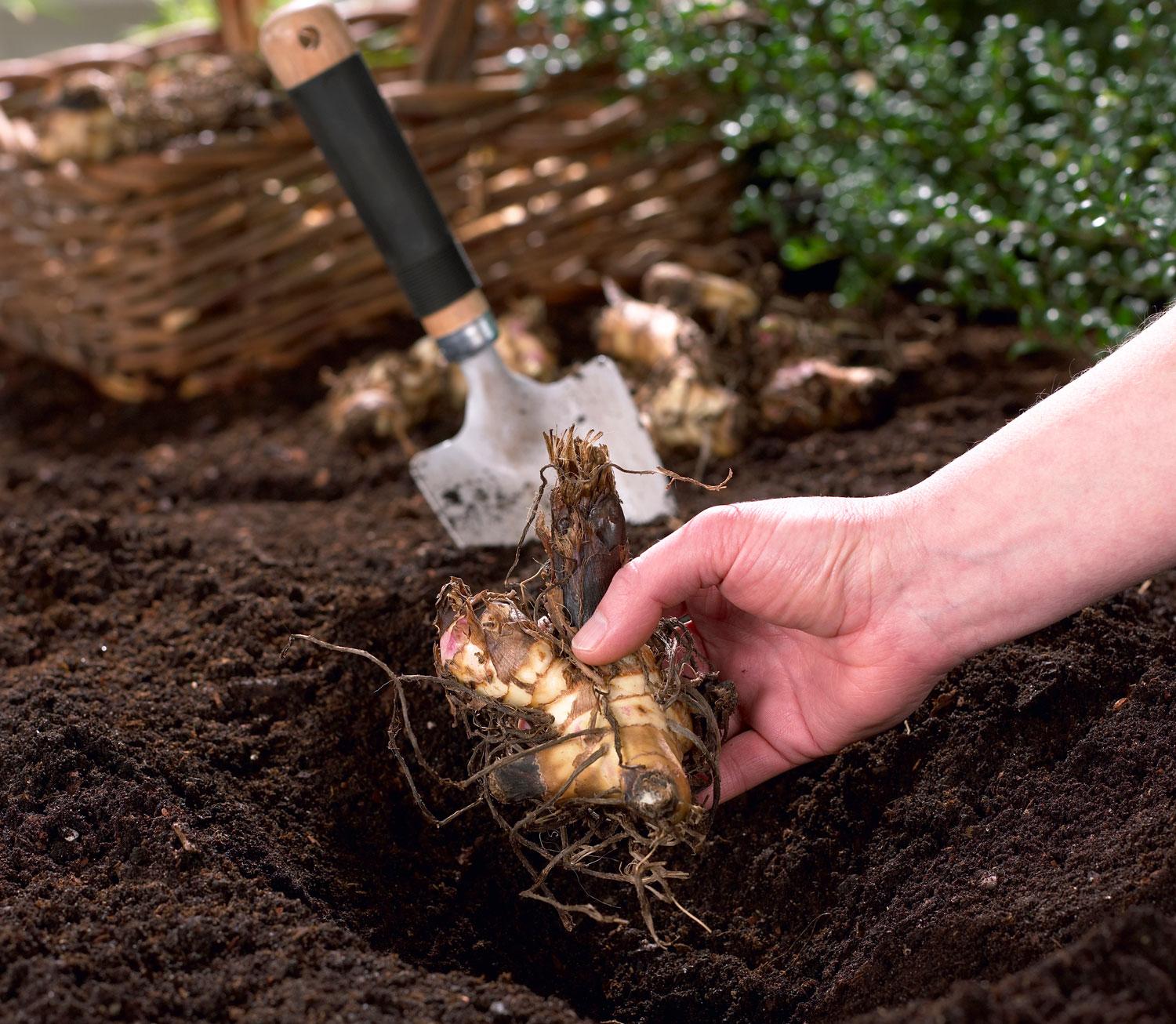
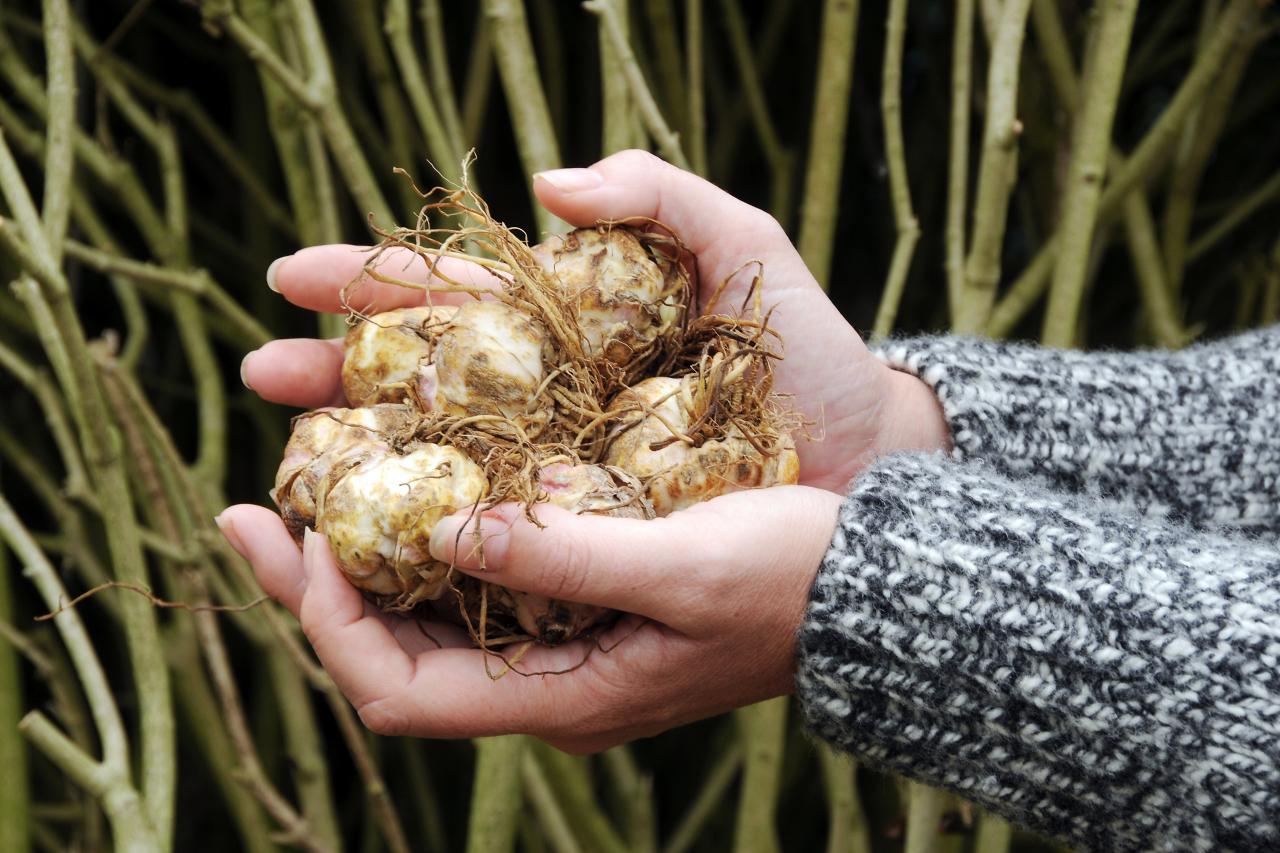
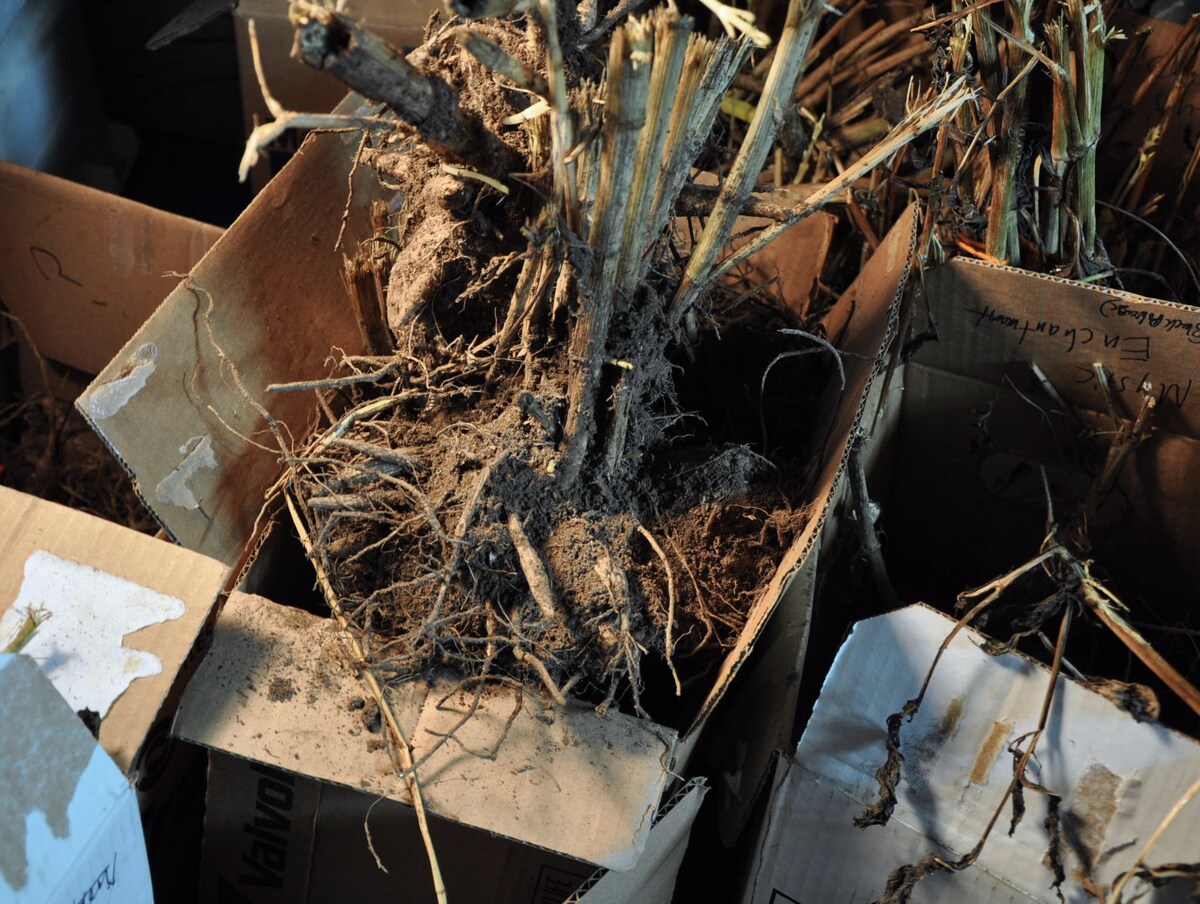

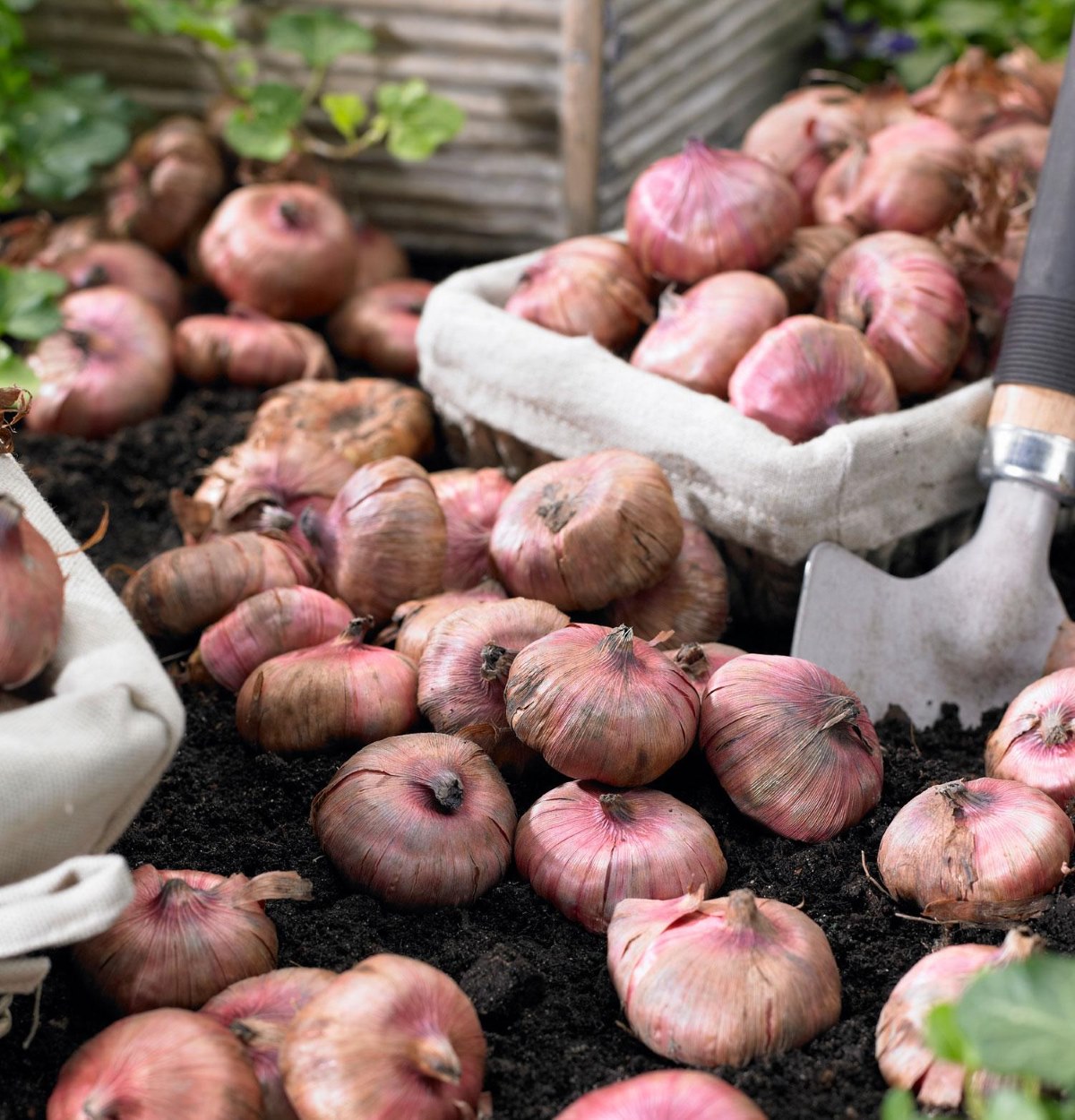


0 thoughts on “How To Store Iris Bulbs”